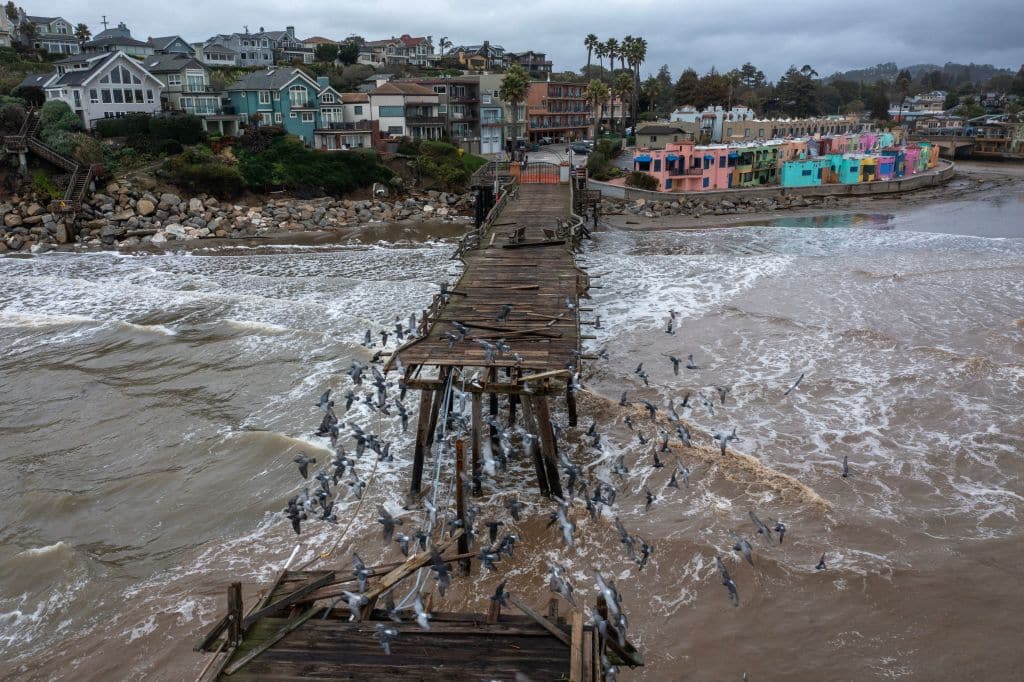Deadly California Rains Overwhelm Power Grid With Mass Outages

 Why you can trust us
Why you can trust us
Founded in 2005 as an Ohio-based environmental newspaper, EcoWatch is a digital platform dedicated to publishing quality, science-based content on environmental issues, causes, and solutions.
Two weeks of unrelenting rains in California have killed more people than have died directly from wildfires in the last two years — and the deluge is not over.
At least 19 people have died across 10 counties. While officials expect that number to rise, it will also be incomplete.
“Those living in our streets may be living on cardboard, they may be living in a tent that can’t withstand the kind of weather we’re having — it’s cold,” Georgia Berkovich, director of public affairs at the Midnight Mission, a long-running human services organization in Los Angeles’s Skid Row, told The Washington Post. At least two of the Midnight Mission community members died after being exposed to the rain, Berkovich said, but their deaths were not officially attributed to the extreme weather and are thus not included in official death counts.
The storms have also wreaked havoc on the Golden State’s power grid, illustrating yet again, the grid’s vulnerability to the stresses of climate change. Hundreds of thousands of California electricity customers have lost power (some multiple times) since New Year’s Eve.

As reported by the Los Angeles Times:
“This is kind of the new normal, this is kind of what the climate crisis has brought us,” said Ric O’Connell, executive director of GridLab, a nonprofit focused on power grid transformation. He said California officials and utilities should be “thinking holistically about the system,” considering new technology and innovative ways that can provide more resilient energy sources even during crises.
PG&E, the state’s largest electricity provider, has plans to bury thousands of miles of lines to better protect against wildfires, which would also help eliminate risk from high winds or falling trees, experts said — but it’s one of the costliest alternatives. The plan is expected to cost at least $15 billion, and it only accounts for about 10% of PG&E’s transmission and distribution lines. Moving all the state’s power lines underground would be financially unsustainable, O’Connell said.
“It would literally cost trillions of dollars, so maybe that’s not the best approach,” O’Connell said, especially given the massive cost estimated for damage and recovery from this series of winter storms.
O’Connell pointed to other backup power options that could increase resiliency, such as leveraging green energy technologies, increasing local battery storage, forming more microgrids that operate separately and making better plans for how the most vulnerable can access power when the grid fails.
For a deeper dive:
Deaths: The Washington Post; Grid: Los Angeles Times, NPR; Climate Signals background: Atmospheric river change, Rain instead of snow, Drought
For more climate change and clean energy news, you can follow Climate Nexus on Twitter and Facebook, sign up for daily Hot News, and visit their news site, Nexus Media News.
Subscribe to get exclusive updates in our daily newsletter!
By signing up, you agree to the Terms of Use and Privacy Policy & to receive electronic communications from EcoWatch Media Group, which may include marketing promotions, advertisements and sponsored content.

 233k
233k  41k
41k  Subscribe
Subscribe 



